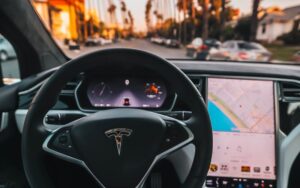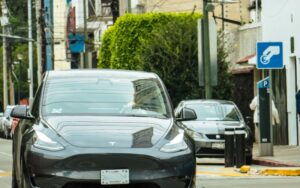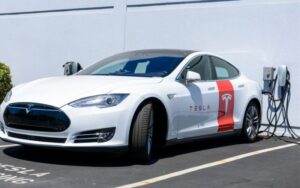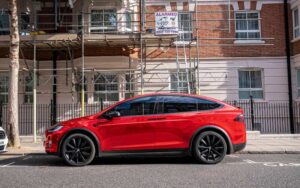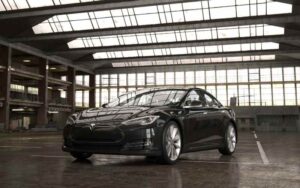How Do Tesla Batteries Work? The Power Behind the Ride!
Last updated on September 21st, 2023 at 09:40 am
In our ever-changing world, the development of Tesla batteries is one of the most outstanding achievements, as its goal is to improve sustainable and renewable energy.
Yes, I am sure by now you know that Tesla batteries are Lithium-ion (Li-ion) products. However, you may not know that Tesla uses about 6,831 individual lithium-ion cells.
The main reason why people run from electric cars is its limited range. But with the advent of Tesla’s energy-dense battery, this is no longer an issue.
This brings us to the question: How do Tesla batteries work?
Tesla batteries do not charge as the vehicle moves, and unlike the hybrid motors, you have to charge from an outlet as they function solely on battery power. Tesla batteries also have a heating system to keep your battery warm during cool temperatures. The energy stored in the battery generates a small motor that powers your vehicle.
For proper judgment about Tesla batteries, as this article unfolds, notice how they work, what makes up the batteries, how long they last, and what happens when the battery dies.
How Does a Tesla Battery Work?
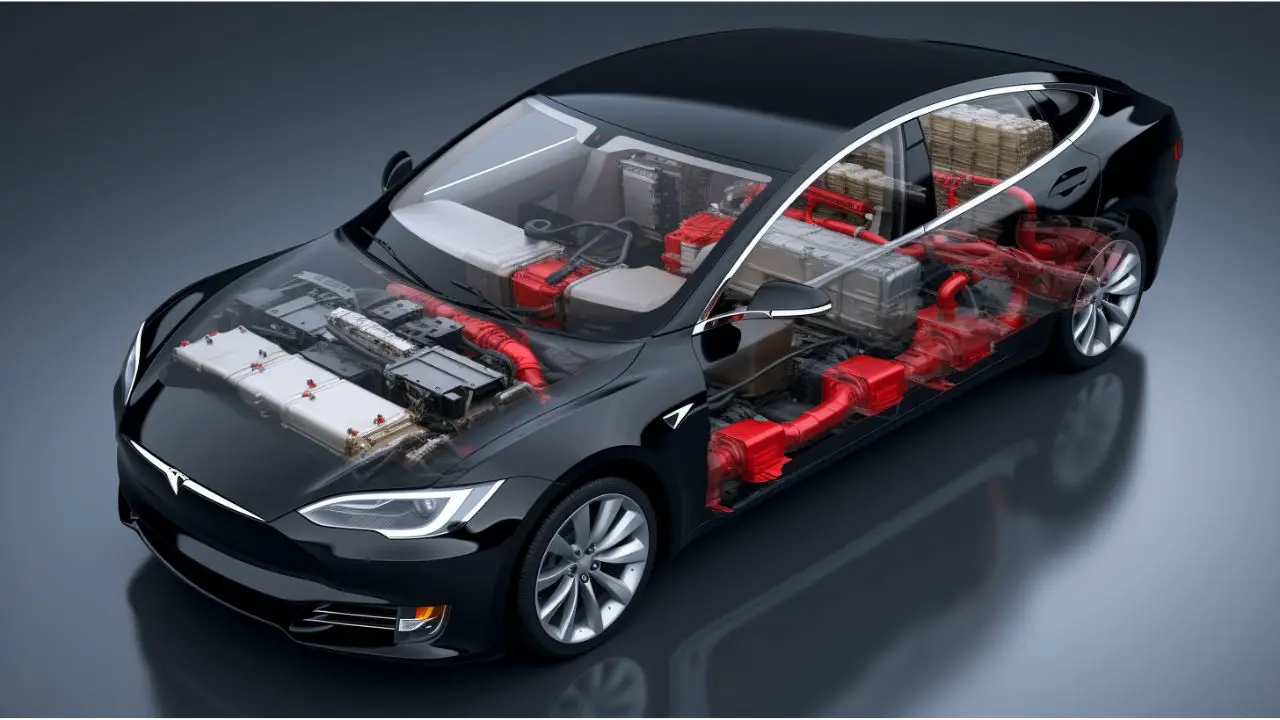
With a Tesla battery, a car can travel up to 620 miles on just a single charge. But it can achieve this feat due to the incredible work put into it.
CEO Elon Musk once said, “People think of Tesla as an eclectic car company, but the whole purpose of Tesla is to accelerate the advent of sustainable energy.”
And this truth can be seen in the development of the Tesla Powerwall system that you can use for powering up your home or small businesses.
While driving with the Tesla battery in your Tesla Roadster, you can go from 0-60mph within 1.9 seconds with a top speed of 250 mph. And a single charge can take you up to 620 miles.
Tesla batteries use thousands of lithium-ion cells to generate enough power for a vehicle to function.
When used in Tesla vehicles, Tesla batteries do not automatically charge while driving like hybrid vehicles.
Rather, you can only charge from an outlet, and the vehicle depends on the battery power.
Furthermore, Tesla batteries come equipped with heating systems capable of keeping the battery warm even when cold.
The generated and stored energy within the Tesla battery will be useful in generating a small motor for powering the vehicle.
And with the Supercharger, you can charge the Tesla battery to full in 90 minutes.
The Powerwall battery system (home-based battery pack) can store up to 10 kilowatts and supply power to a household for many hours.
The truth is that Powerwall can store less battery than the Tesla Model S battery, but this fact is in the specification of the products.
Secondly, while cars use direct current to charge, most homes use alternating currents, which may require the new battery packs to come with a converter.
What Are Tesla Batteries Made of?
Most people only consider lithium when talking about Tesla batteries, but it would be wrong to focus only on that.
There are other raw materials that, if neglected, will bring a huge blow to production.
For instance, consider the Tesla Model S battery pack of 70 kWh, which contains 63 kg of lithium, and its total weight is 453 kg (1000 lbs).
Yet, there are other challenges to Tesla vehicles. Tesla CTO JB Straubel says that he is more worried about cobalt, which plays a pivotal role as the cathode of the Tesla battery.
But Tesla is still working on stabilizing the supply of cobalt. Much of Tesla’s cobalt supply has always come from Congo in Africa, ravaged by conflict.
However, Tesla is now exploring new opportunities in North America.
Furthermore, Tesla says it aims to source all raw materials from North America, with its Gigafactory in Nevada. It is also where the new 2170 battery cells undergo production.
To help you determine what battery you should go for, we will have to discuss the different battery types and some key things you should know about them.
Generally, there are three different types of battery you will find in any given Tesla, and they are;
#1. Nickel-cobalt-aluminum (NCA)
Back in 2011, when the Tesla Model S came out, the battery cells were called the “18650s” because the battery’s dimensions were 18 mm in diameter and 65 mm in length.
Later, when the Model 3 and Model Y came out, Tesla switched again to “2170,” which is 21 mm in diameter and 70 mm in length.
NCA and NCM batteries comprise both cobalt and nickel, having very high energy density. This makes them perfect performance models and vehicles with high acceleration.
#2. Lithium-iron-phosphate (LFP)
By the first quarter of 2022, Tesla already had all standard Model 3 and Ys batteries to LFP batteries. And about half the vehicles delivered worldwide had the LFP battery.
Many issues that NCA and NCM could not solve, LFP batteries were able to solve them.
The batteries function without cobalt and can substitute nickel for phosphate and iron, which are readily available.
Note also that the LFP batteries will be less likely to be affected by thermal runaway or any issue that may result in the fire outbreak. However, it stores 30% less energy than nickel batteries.
Furthermore, LFP operating voltage is also slightly lower than nickel. But the rumors saying that the Tesla LFP loses range in cold weather are completely false.
#3. 4680 Tablets Battery Pack
Just imagine the batteries you put into your remote at home; there is usually a bump on one end and a slight indentation on the other.
Those are called “tabs” that allow the flow of electrons in and out of a battery that is in use or charging. And most of the lithium batteries you find around you also have them.
It was so, at least until Tesla’s 4680 tablet battery. If you think “4680” means 46 mm in diameter and 80 mm in length, then yes, you are correct.
An issue with tabs is that because electrons have to exit from one before entering another, there is usually a traffic jam, which will produce a lot of heat ( energy wastage).
So there is no efficiency when using a single tab for entry and a single tab for exit, especially when trying to move a lot of electrons.
Resolving this issue requires using several entrances and several exits. And it will not be achievable with tabs that will only bring out failure possibilities for high voltage batteries.
With the 4680 tablets, you can get five times the boost in energy, six times the power, and a range increase of about 16%.
Lastly, the 4680 tables can be easily manufactured with fewer parts, offering a 14% reduction in cost.
The table below shows the different Tesla models and the batteries they use.
| Tesla Model | Type of Battery |
|---|---|
| Standard Range Model 3 (late 2021) | LFP |
| Standard Range Model 3 (after 2020) | LFP |
| RWD Model Y (only China) | LFP |
| Model S (all years) | Nickel based |
| Model Y (all years) | Nickel based |
| Long Range Model 3 | NCA |
How Long Do Tesla Batteries Last?
According to the impact report of Tesla in 2021, the batteries are to last as long as the life of the vehicle itself.
And Tesla suggests a rough estimate of 200,000 miles in the US and 150,000 miles in Europe.
The data of Tesla show that Model S and X will retain an average of 200,000 miles, about 90% of the original capacity.
CEO Elon Musk of Tesla tweeted that Model 3 and Model Y can last up to 1,500 charging cycles.
This means that the Standard Range Models can go 300,000 miles and the Long Range Models 500,000 miles.
How Long Can Tesla Batteries Last Per Charge?
The table below shows how long the various models of Tesla can last per charge and their batteries.
| Model | Range (miles) | Battery (kWh) |
|---|---|---|
| Model 3 Standard | 272 | 60 |
| Model 3 Long Range | 358 | 80 |
| Model 3 Performance | 315 | 80 |
| Model S | 405 | 98 |
| Model S Plaid | 396 | 98 |
| Model X | 348 | 100 |
| Model X Long Range | 330 | 100 |
| Model X Plaid | 311 | 100 |
| Model Y Long Range | 326 | 74 |
| Model Y Performance | 303 | 74 |
What is the Size of a Tesla Battery and How Does it Contribute to Its Power?
The tesla battery capacity revealed plays a crucial role in determining the power of a Tesla vehicle. The size of a Tesla battery varies depending on the model, ranging from 50 kWh to over 100 kWh. A larger battery capacity allows for a greater electric range and improved performance, contributing to the overall power and efficiency of the vehicle.
What Happens When a Tesla Battery Dies?
The 2021 impart report from Tesla shows that when your battery dies, especially lithium-ion batteries, it can be remanufactured or recycled.
You can refine the old battery’s materials into a new cell. However, according to Tesla, recycling is not the first choice as the life of the pack can first be extended before recycling.
What if your Tesla battery gets to 0%? What can you do? Well, you can still drive a few more miles.
But when you get to the point where you can no longer drive, note that;
- Towing a Tesla on its wheel will not be possible because of regenerative braking.
- The vehicle should be in jack and tow mode: Controls, Service, and Jackmode.
- You will then put it on Tow mode: Controls, Service, Towing, Tow Mode
- You can contact Tesla roadside assistance using your Tesla app, and they will help you restart your vehicle.

Hey, I’m Michael Davis, a 35-year-old with a degree and a love for cars and tech. Since I was a kid, cars have been my thing—so much that I even thought they ran on magic beans! Fast forward, and I’ve built Vehicle Army, your one-stop-shop for easy-to-understand car facts.

